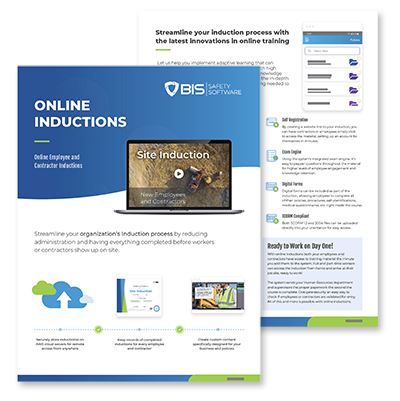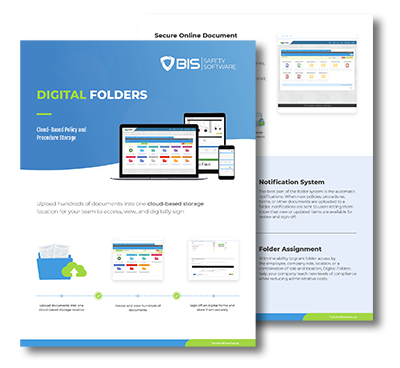Safety toolbox talks are a crucial component of any workplace safety program, serving as a platform for communication, education, and awareness. However, these talks are often perceived as dull and routine, leading to disengagement among employees. To ensure that safety remains a top priority while also keeping the workforce engaged, it’s essential to add creativity and innovation. Here are five main strategies for making safety toolbox talks fun and engaging, incorporating games and innovative approaches.
1: Infuse Humor
Infusing humour into safety talks can break down barriers and make the information more relatable and memorable. Incorporate light-hearted anecdotes, amusing safety-related stories, or even relevant cartoons to add a touch of levity to the discussion. While maintaining the seriousness of the subject matter, humour helps to capture attention, making the learning experience more enjoyable. A positive and engaging atmosphere contributes to better retention of safety information. Here are a few examples:
- Cheesy Slogan – Bring in a cheesy safety slogan. As it may sound slogans are a creative way to help make things stick. A couple of examples of slogans.
- “Caution: Don’t Make Today the Day You Meet Mr. Oops!”
- “Broken tools can be replaced, you cant.”
- “Behind the Wheel, ANGER Is Only One Letter Away from DANGER”
- “A Harness Is Better than a Hearse”
- “Don’t Be Silly, Wrap Your Billy… Helmet, That Is!”
- Resource reference 20 Catchy Safety Slogans (And Why They Matter) (safeopedia.com)
- Take Flight with Safety – imagine conducting a workplace safety meeting where discussing emergency exits takes a lighthearted and engaging approach, drawing inspiration from the familiar airline safety demonstration. Begin by acknowledging the similarity between workplace exits and the exit procedures presented on airplanes. Infusing a bit of humor and a playful analogy, discussing workplace exits becomes an engaging and memorable experience for employees.
- Blast from the past, Laugh and Learn with Safety- Create a positive and engaging workplace safety culture by sharing funny photos or videos of workplace errors, turning potential hazards into lighthearted learning opportunities. Look for old photos of safety equipment evolution such as hard hats, harnesses, gas monitors, communications and discuss how they have evolved in protecting employees. By using humor as a teaching tool, this approach not only captures employees’ attention but also fosters collective responsibility and active participation in creating a safer work environment.

2: Interactive Games for Learning:
Traditional safety talks can become monotonous, leading to decreased attention and retention among employees. To combat this, incorporate interactive games that not only educate but also entertain. For example, use scenario-based games where employees can discuss and solve safety challenges relevant to their work environment. This not only encourages teamwork but also enhances problem-solving skills. Additionally, consider using quiz-style games or safety bingo, where employees can earn small rewards for correct answers, fostering a sense of competition while reinforcing safety knowledge. A few examples:
- Scavenger Safety Quest – Elevate workplace safety awareness with a Safety Scavenger Hunt, a dynamic and interactive activity that transforms learning into a fun and engaging experience. By blending teamwork, technology, and creativity, employees actively explore safety features, reinforcing a positive safety culture and fostering shared responsibility for workplace well-being. For example: hazard hunt and have them identify hazards on a map.
- Head Games: Hat Hard & Watermelon Edition- Demonstrate the importance of head safety in the workplace by using a watermelon and hard hat to simulate different impact scenarios, illustrating the protective role of the hard hat under varying heights. This hands-on approach ensures a memorable lesson, fostering a heightened awareness and commitment to workplace safety.
3: Real-life Simulations and Demonstrations:
Bring safety talks to life by seamlessly weaving in real-life simulations, demonstrations, and dynamic role-playing exercises. Craft scenarios that closely replicate potential workplace hazards, providing employees with the opportunity to actively engage in problem-solving. Employ props, equipment, and visual aids to amplify the learning experience, transforming abstract concepts into tangible, memorable lessons. For instance, simulate a fire drill or orchestrate a first aid demonstration to allow participants to immerse themselves in hands-on experiences. These interactive scenarios not only leave lasting impressions but also render safety practices more memorable and immediately applicable to real-world situations. Here are a few ideas:
- Chemical Showdown – a dynamic game integrating WHMIS and GHS datasheets into a fun and interactive toolbox talk. Teams collaborate into selecting a chemical, locating the datasheet, identifying, finding and discussing different safety cleanup and response tactics for the response to the chemical. This could be broken into teams and timed. Overall this fosters enjoyment while reinforcing crucial safety information in an enjoyable manner.
- Spill Thrills: From Cleanup Chills to ERP Drills- Identify a spill, discuss specific type of chemical, where the response kit is, discuss appropriate cleanup activities including PPE and notification, discuss the ways to mitigate injury, discuss the next emergency steps, pull the Emergency response plan (ERP) and see if the right steps were followed discuss lessons learned.
- Flooding Fiasco, Tornado Tango, Fire frenzy Communication collapse, Emergencies Unleashed– give scenario of a fire, tornado, security threat, flooding, loss of communications, workers down what’s the first things to do and assess? Discuss immediate actions, necessary resources, and strategic assessments for each emergency, while considering adaptations if key personnel are absent, ensuring a comprehensive and agile response to any unexpected situation.
- Break the safety stigma – a talk that confronts the stigma around ‘we haven’t had an incident”…yet…. By navigating various scenarios that could change a task and escalate into an incident. Think of scenarios such as new team members, contractors, and equipment changes, we empower our team to proactively address potential risks, fostering a culture of collective responsibility and continuous improvement.

4: Incorporate Technology for Engagement:
Embrace technology to enhance the engagement level of safety toolbox talks. Use multimedia presentations, interactive apps, and virtual reality simulations to create a dynamic learning environment. Virtual reality can provide realistic safety training scenarios, allowing employees to experience potential hazards in a controlled setting. Interactive apps can facilitate quizzes, polls, and real-time feedback, making the learning process more engaging. By leveraging technology, safety talks can become more visually stimulating and adaptable to different learning styles.
- Complacency Combat – engages the team with an interactive ‘Spot the Change’ game, emphasizing the impact of overlooking subtle alterations in the workplace. The discussion underscores the importance of vigilance, personal responsibility, and leadership’s role in fostering a culture of continuous awareness to combat complacency and enhance overall safety.
- Technical Triumphs – Explore the positive impact of technology in the workplace by identifying examples of its contributions. Delve into an open discussion on the challenges and barriers faced during implementation, fostering an understanding of both the advantages and complexities brought about by technological advancements in the work environment of how technology has helped your workplace.
- Safety tech guardians – identify examples of how technology and innovation is helping in workplaces. Incorporate discussions on wearable technologies into our daily routines, how these evolutions have helped in both personal safety and potentially workplace safety. This helps employees think about safety as an ongoing evolution and helps engagement and adoption with future implementations.
- Use QR codes – take a fun and innovative approach using QR codes. By turning hazard hunts into interactive adventures, employees can scan items to fill in blanks on expiry dates, identify fire extinguishers, and recognize fire wardens, transforming routine tasks into engaging and informative experiences.
- Interactive Virtual Reality (VR) Experience – Use VR technology to immerse employees in realistic safety scenarios. This innovative approach allows participants to navigate and respond to potential hazards in a controlled virtual environment.
5: Employee Involvement and Recognition:
Empower employees to take an active role in safety talks by encouraging them to share their experiences, insights, and suggestions. To boost engagement, consider incorporating a prize system, where participants have the chance to win small rewards for active involvement or correct responses. This not only adds a competitive edge but also motivates employees to actively contribute to the safety dialogue. Create a culture of open communication, where employees feel comfortable discussing safety concerns and proposing solutions. Recognize and reward employees who actively contribute to safety discussions or demonstrate exemplary safety practices. Implementing a peer-to-peer recognition program can foster a positive safety culture, motivating employees to actively participate in safety talks and take ownership of their well-being.
- Home haven – bring a tool from home and discuss proper use, inspection, and maintenance of home safety tools. This not only ensure the well-being of families but also cultivate a safety-conscious culture beyond the workplace.
- Safety Cinema lights, camera, action – inject a dose of creativity into safety awareness by challenging the team to create self-made safety videos. Participants choose a safety topic, craft a script, and film their scenes, with submitted videos open for team voting, fostering engagement and recognition for innovative safety communication.
- Mindful moments – Infuse a sense of well-being into the workplace through mindful exercises, encompassing stress-reducing breathing techniques, rejuvenating stretch breaks, and relieving eye strain with the 20-20-20 rule. By incorporating these practices into our routine, we not only prioritize physical health but also actively contribute to stress reduction, fostering a focused and positive atmosphere that enhances overall productivity and job satisfaction.
- Team Spark – empower employees to contribute engaging ideas, games, and topics. Through a voting process and exciting prizes, transform these employee-sourced gems into dynamic elements, infusing our workplace with energy, innovation, and heightened engagement.
Revitalizing safety toolbox talks to be both engaging and enjoyable doesn’t diminish their importance. By integrating interactive games, real-life simulations, technology, and fostering employee involvement, organizations can prioritize safety without sacrificing employee engagement. Collaborating with leaders, the safety department, and committees ensures support and buy-in, ultimately contributing to improved knowledge retention and enhancing the overall well-being and morale of the workforce. Always keep in mind, a workplace with a fun and engaging safety culture is inherently safer and more productive!
For a safer workplace and expert support with toolbox talks and all your safety and learning requirements, reach out to us today – your partner in progress!
Additional Articles

What is Safety Culture and Why Does it Matter
What is Safety Culture and Why Does it Matter? A strong safety culture isn’t just about following rules—it’s about making safety an ingrained habit, valued above profitability, productivity, or ego. However, complacency can set in when people do something for

This Isn’t Just Practice — It’s Protection
Daily safety habits aren’t just drills—they’re protection. Real stories show how awareness and routine prevent incidents before they happen. … Read More

























